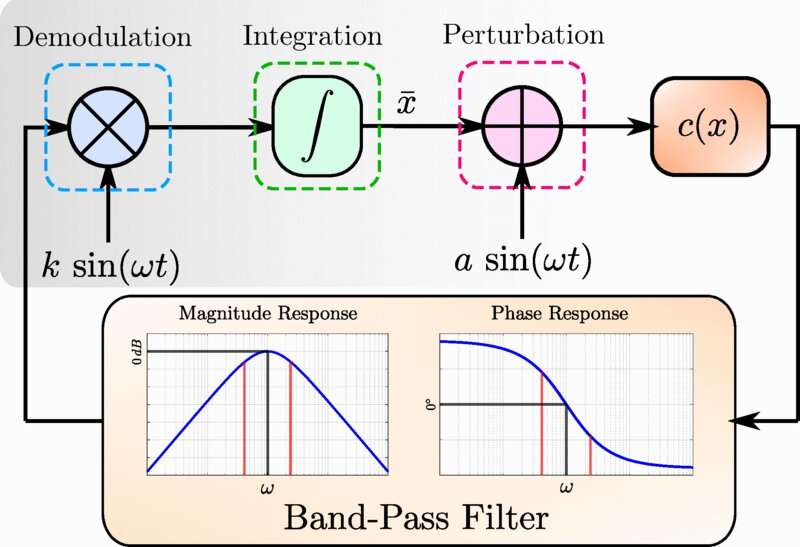December 12, 2022 report
Navigation strategy of sea urchin sperm found to be a natural implementation of extremum seeking

A trio of researchers, two from the University of California at Irvine, the third from the University of Michigan at Flint, has found that sea urchin sperm navigation is a natural implementation of extremum seeking. In their paper published in the journal Physical Review E, Mahmoud Abdelgalil, Haithem Taha and Yasser Aboelkassem describe how they used a navigation model and concepts from control theory to help explain how sea urchin sperm are able to make their way through ocean water to find eggs to fertilize.
Prior research has shown that as part of mating, female urchins eject a cloud of eggs into the sea around them. Similarly, male urchin eject a cloud of sperm into the sea. The sperm then make their way to the eggs and fertilize them. But how do the sperm find the eggs? That has been a question oceanographers have asked themselves for quite some time. In this new effort, the research trio has solved the puzzle.
The work by the researchers began when they noticed that models of a real-time computer search algorithm called 'extremum seeking' looked very similar to what was occurring in videos of urchin mating. In such models, one entity finds another by reacting with movement to signals that it receives. Movements in the right direction result in signal reception becoming stronger, whereas movements in the wrong direction lead to weaker signals.
For the searching entity to find its targets, it need only continue seeking an increase in signal strength. Extremum seeking is widely used in human applications such as combustion control and control of antilock brakes in cars.
With the sea urchin, the researchers found that the eggs emit a peptide that serves the same purpose as the signals in a computer system. Sperm continually react to such signals, seeking to increase their strength until they reach an egg. The researchers note that their findings suggest that extremum seeking could be used in biological applications, such as in the development of therapies targeting tumors. They note also that it appears likely that other creatures use extremum seeking, including bacteria looking for food, and alga that move toward light.
More information: Mahmoud Abdelgalil et al, Sea urchin sperm exploit extremum seeking control to find the egg, Physical Review E (2022). DOI: 10.1103/PhysRevE.106.L062401 .
On Arxiv: arxiv.org/abs/2108.13634
Journal information: Physical Review E , arXiv
© 2022 Science X Network




















